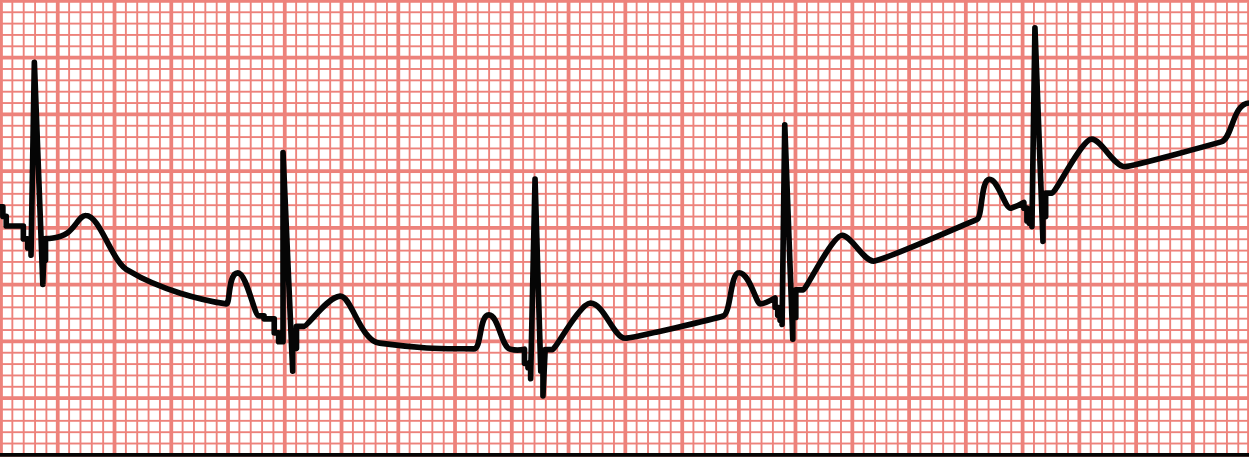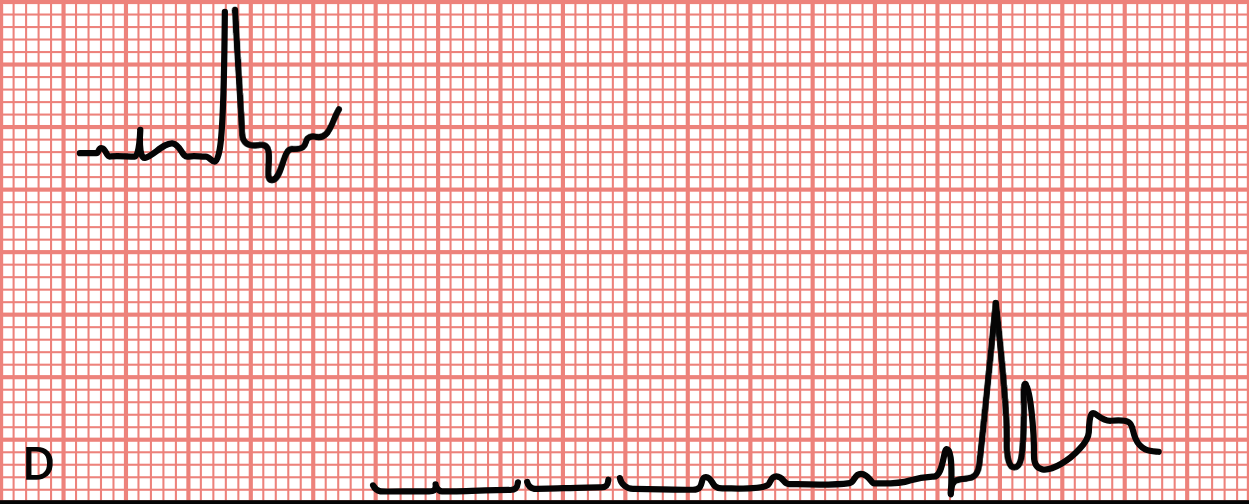Artifacts, Signal Distortions, and Electrical Interference (Module 9 - EKG and Cardiovascular Testing)
1/16
There's no tags or description
Looks like no tags are added yet.
Name | Mastery | Learn | Test | Matching | Spaced |
|---|
No study sessions yet.
17 Terms
What are artifacts within EKG tracings?
Alteration or interference on the EKG that is not related to the cardiac electrical activity of the patient; appears as distorted lines or waves.

Which type of artifact is shown in this image?
Somatic Tremor
How would you know if an artifact in an EKG tracing is from a Somatic Tremor?
It’s characterized by irregular spikes throughout the EKG tracing.
What causes artifacts from Somatic Tremors?
Voluntary and involuntary muscle movement such as shivering because the individual feels cold.
What should you do to stop interference from Somatic Tremors?
Instruct the patient to avoid moving (and talking), but also breathe normally. Offer blankets for warmth and comfort and reassurance to decrease their anxiety.
For patients with conditions that cause involuntary movement, have them lay their hands palms-down under their buttocks to reduce somatic interference.

Which type of artifact is shown in this image?
AC Interference, also known as 60-cycle interference.
How would you know if an artifact in an EKG tracing is from an AC Interference?
It’s characterized by regular spikes throughout the EKG tracing.
What causes an artifact from an AC Interference?
Poor grounding of the EKG machine or external electricity from nearby electrical equipment interfering with the tracing.
What should you do to stop AC Interferences?
Avoid crossed lead wires, move the bed away from the wall, and turn off unnecessary electronic devices.

Which type of artifact is shown in this image?
Wandering Baseline
How would you know if an artifact in an EKG tracing is a Wandering Baseline?
The baseline will stray from the center of the tracing.
What causes a Wandering Baseline?
Breathing or poor electrode connection.
What should you do to stop a Wandering Baseline?
Instruct the patient to avoid talking (and moving), but also breathe normally. Also instruct the patient to avoid using creams, lotions, and powders before an appointment for an EKG to ensure the electrodes can stick to their skin.
If the patient is wearing any of the aforementioned items, use an alcohol wipe to clean the areas where the electrodes will be attached.

Which type of artifact is shown in this image?
Interrupted Baseline
How would you know if an artifact in an EKG tracing is an Interrupted Baseline?
There is a break in the tracing or a flat, horizontal line.
What causes an Interrupted Baseline?
It’s usually related to broken or disconnected lead wires.
What should you do to stop an Interrupted Baseline?
Reattach or replace the lead wire.